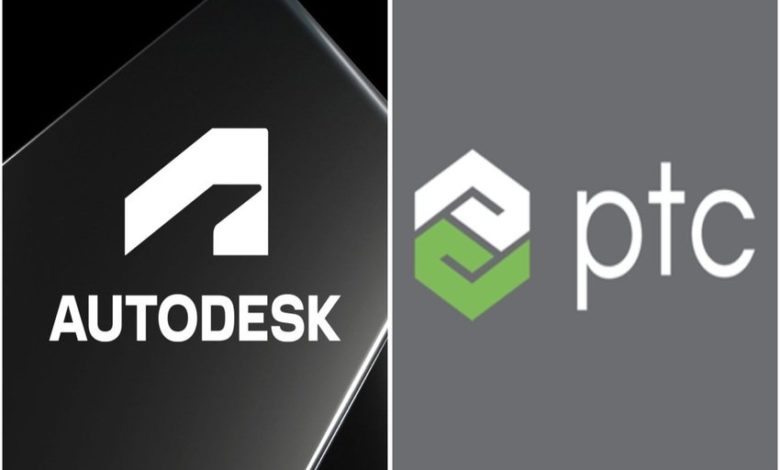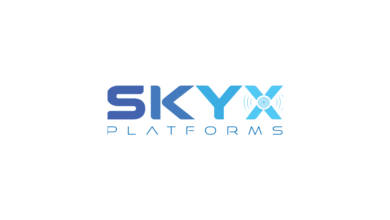PTC In Play: Why Autodesk’s Bid Could Reshape The Industrial Software Landscape

Autodesk Inc (NASDAQ:ADSK) is reportedly exploring a potential acquisition of Boston-based engineering software rival PTC Inc (NASDAQ:PTC). With a market cap of nearly $23 billion, PTC has garnered interest not only from Autodesk but also from other industry players as consolidation in the industrial software sector accelerates. The move comes amid heightened demand for digital transformation tools across manufacturing, driven by increasing product complexity and the adoption of AI. Autodesk, whose core business serves architecture, construction, and manufacturing, is said to be working with advisors on a possible cash-and-stock deal. This potential merger would follow a wave of high-profile industry deals including Siemens’ acquisition of Altair and Synopsys’ purchase of Ansys, signaling the intensifying competition for scale and capability in manufacturing software.
Strategic Product Overlap In PLM & ALM Offers A Unified Digital Thread
One of the strongest rationales for Autodesk acquiring PTC lies in the product synergies between the two firms in the Product Lifecycle Management (PLM) and Application Lifecycle Management (ALM) domains. PTC’s Windchill PLM system has evolved over two decades into a central system of record for many manufacturers, managing everything from CAD file storage to cross-department collaboration across engineering, quality, compliance, and manufacturing. Meanwhile, its acquisition of Codebeamer has given it a growing footprint in ALM, a space increasingly converging with PLM due to the integration of software in hardware products. Customers now expect a seamless digital thread where software and hardware design processes are managed in tandem. Autodesk, traditionally strong in design and architecture, lacks the depth and penetration in PLM and ALM that PTC offers. Integrating these solutions would allow Autodesk to serve end-to-end product development workflows — from CAD and configuration management to requirements tracing and field service optimization. With more products across industries becoming embedded with software — especially in regulated sectors like medtech, aerospace, and automotive — ALM becomes mission-critical, and Codebeamer gives Autodesk an entry point. The synergies here could lead to a combined platform more capable of addressing the complexity of modern product development cycles, ultimately driving cross-sell opportunities and subscription ARR expansion.
Complementary SaaS Migration Strengthens Autodesk’s Cloud Strategy
Autodesk’s long-term strategy hinges on migrating its design tools to the cloud, and PTC’s evolving SaaS portfolio could accelerate that transformation. PTC has been actively transitioning its traditional on-prem software to cloud-native or hybrid SaaS platforms such as Windchill+, Creo+, and Onshape. Windchill+, in particular, is gaining traction as a SaaS-first PLM solution, leading sales engagements with an increasingly cloud-centric client base. Meanwhile, Onshape — the only truly cloud-native CAD platform in the industry — has created competitive displacements in a mature market that rarely sees such shifts. Autodesk, despite being a first mover in cloud-based design with Fusion 360, still has significant legacy desktop software across its portfolio. By acquiring PTC, Autodesk could leapfrog its own internal SaaS development timelines by integrating PTC’s advanced SaaS infrastructure and methodologies, particularly in configuration management, enterprise integration, and agile deployment. This could also allow Autodesk to expand its reach into mid-sized and large manufacturers that are currently transitioning their entire tech stack to the cloud. The SaaS migration would be further enabled by PTC’s experience in decustomizing complex on-prem environments for cloud readiness, giving Autodesk a tried-and-tested playbook to apply across its broader product base. The combined company could then lead the market in offering an enterprise-scale SaaS solution that spans CAD, PLM, ALM, and even Field Service Management — a position unmatched by rivals like Dassault or Siemens.
Robust Cross-Sell Pipeline & Verticalization Strategy Can Boost ARR
PTC’s go-to-market transformation — which involves verticalizing its sales, marketing, and customer success organizations — could offer Autodesk a playbook for expanding its own direct sales capabilities and improving net new ARR. PTC’s focus on key verticals such as aerospace & defense, automotive, electronics, industrials, and medtech is already showing early traction, with a pipeline that grew in Q2 year-over-year and sequentially. Moreover, the company’s Chief Revenue Officer has emphasized improved sales process discipline and pipeline hygiene, while retaining strong fundamentals even during macro uncertainty. Autodesk, historically more horizontal in its market approach, could benefit from PTC’s vertical selling expertise to deepen customer engagement and unlock expansion opportunities in underserved industrial segments. PTC has also built a framework for upsell and expansion-based ARR growth, accounting for the majority of its recurring revenue gains, followed by cross-sell opportunities across ALM, PLM, CAD, and ServiceMax. Integrating these levers into Autodesk’s ecosystem could help accelerate Autodesk’s own subscription growth, particularly if Autodesk can embed PTC’s specialized industry tools and vertical knowledge into its core platforms. Furthermore, PTC’s international presence — though still underpenetrated in regions like China — could add to Autodesk’s global diversification, with a more unified go-to-market engine and improved customer lifetime value across both enterprises.
AI-Driven Innovation Pipeline & Service Integration Enhance Enterprise Value
With AI shaping up as the next competitive frontier in engineering software, PTC’s proactive deployment of AI agents across its platform offers Autodesk a ready-made innovation roadmap. PTC has already brought to market AI agents within its ServiceMax platform and plans to expand them into Codebeamer and Windchill by year-end. These agents aim to automate knowledge extraction, improve decision support, and link systems such as ERP, MES, and field service to core design and configuration workflows. Autodesk could incorporate these capabilities into its own tools, accelerating the time to intelligent automation across construction, manufacturing, and product design. Moreover, PTC’s digital thread strategy — which involves tying together CAD, PLM, ALM, and SLM (Service Lifecycle Management) — becomes more powerful when augmented by cross-platform AI. Customers are increasingly demanding predictive maintenance, automated root cause analysis, and intelligent product configuration tools, all of which are enabled by PTC’s AI and data connectivity investments. Integrating these features could elevate Autodesk’s enterprise appeal, particularly among large manufacturers running multi-system environments. Additionally, the AI tools under development could help Autodesk reduce churn and improve implementation outcomes by automating customer success workflows — aligning well with its push for expanding margins and lifetime customer value. Together, this AI-led strategy could future-proof Autodesk’s offerings while responding to increasing enterprise demand for automation and interoperability.
Final Thoughts
Source: Yahoo Finance
While no final decision has been made, the news has already impacted market sentiment — we can see that PTC shares spiked by 19% before retracing, while Autodesk saw a nearly 7% decline. Despite the slight decline in Autodesk’s stock, it is hard to deny the fact that PTC’s product stack fills meaningful gaps in Autodesk’s portfolio, particularly in enterprise manufacturing. The acquisition would not only provide Autodesk with enhanced PLM and ALM capabilities and expanded ARR pipelines but also give it a combined market share of 17% in the $19 billion manufacturing software segment. However, the risks cannot be ignored. Execution challenges tied to integrating two complex product portfolios, retaining talent amid restructuring, and managing customer migration to cloud platforms are all substantial. Additionally, with activist investor Starboard Value involved in Autodesk and the market still adjusting to macro volatility, consensus among stakeholders is not guaranteed. While the deal presents opportunities to deepen Autodesk’s enterprise relevance and scale, it remains to be seen whether it can be executed without disruption or regulatory pushback.




